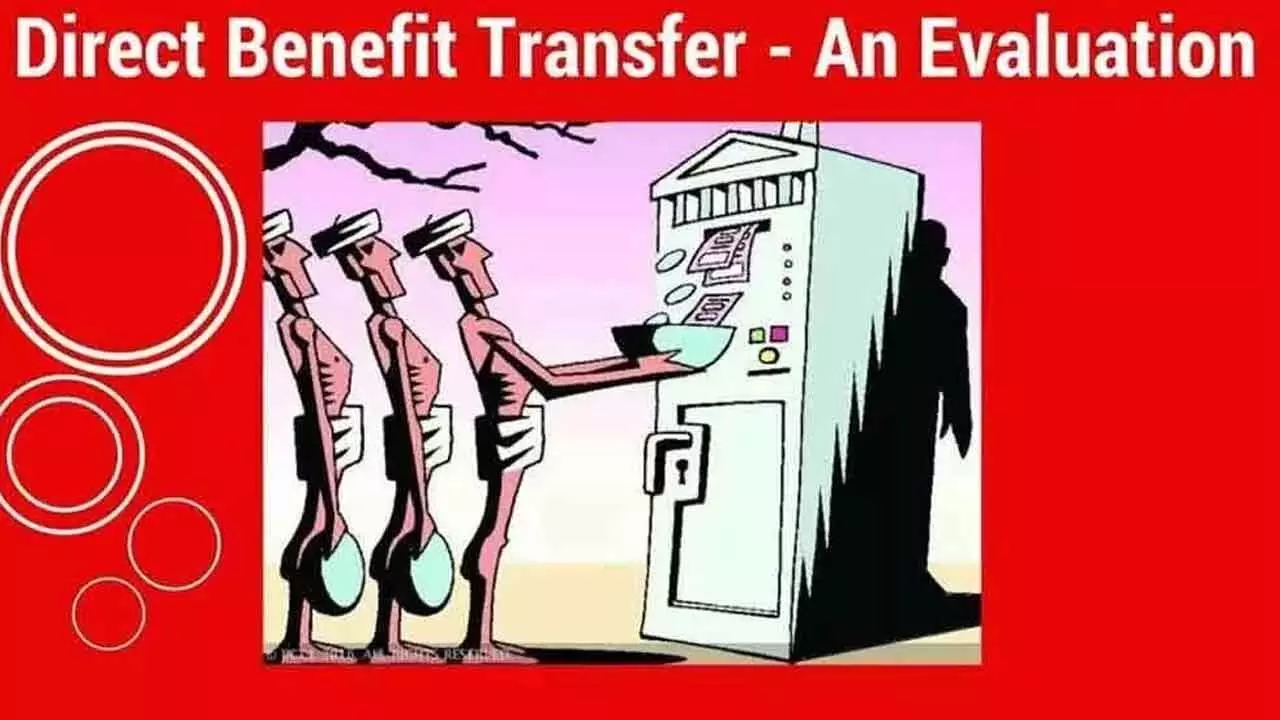India’s DBT: Boosting Welfare Efficiency
Report reveals `3.48 lakh crore in savings, 16-fold increase in beneficiaries
India’s DBT: Boosting Welfare Efficiency

The rise in WEI underscores the success of DBT in optimizing fiscal resources while broadening coverage for millions of beneficiaries
India’s Direct Benefit Transfer (DBT) system has helped the country achieve cumulative savings of ₹3.48 lakh crore by plugging leakages in welfare delivery, according to a new quantitative assessment by the BlueKraft Digital Foundation.
The report also finds that subsidy allocations have been reduced from 16 per cent to nine per cent of total government expenditure since the implementation of DBT, reflecting a major improvement in the efficiency of public spending.
The assessment evaluates data from 2009 to 2024 to examine the impact of DBT on budgetary efficiency, subsidy rationalisation, and social outcomes. It shows how the shift from paper-based disbursals to direct digital transfers has ensured that public funds reach the people they are meant for.
One of the key features of DBT is the use of the JAM trinity, which stands for Jan Dhan bank accounts, Aadhaar and mobile phones. This framework has enabled targeted and transparent transfers on a massive scale.
To capture the full extent of its impact, the report introduces a Welfare Efficiency Index. This index combines fiscal outcomes such as savings and reduced subsidies with social indicators like the number of beneficiaries reached, offering a clear picture of how well the system is working. The index has risen nearly threefold from 0.32 in 2014 to 0.91 in 2023, reflecting a sharp increase in both effectiveness and inclusion.
At a time when governments across the world are rethinking on how to strengthen social protection, the DBT model presents valuable lessons in aligning financial prudence with equitable governance.
Key findings-Budgetary allocation trends:
The data on subsidy allocations reveals a significant shift post-DBT implementation, highlighting improvements in fiscal efficiency despite a surge in beneficiary coverage.
Pre-DBT era (2009–2013): Subsidies averaged 16 per cent of total expenditure, amounting to Rs 2.1 lakh crore annually, with considerable leakages in the system.
Post-DBT era (2014–2024): Subsidy expenditure decreased to nine per cent of total expenditure in 2023-24, while beneficiary coverage surged 16-fold from 11 crore to 176 crore.
Subsidy allocation trends (2009-2024): By eliminating ghost beneficiaries and middlemen, the system redirected funds to genuine recipients without proportional increases in the budget.
Sectoral analysis: A detailed breakdown of sector-specific impacts shows how DBT has particularly benefited high-leakage programmes.
Food Subsidies (PDS): Rs 1.85 lakh crore saved, accounting for 53 per cent of total DBT savings. This was largely due to Aadhaar-linked ration card authentication.
MGNREGS: 98 per cent of wages were transferred timely, saving Rs 42,534 crore through DBT-driven accountability.
PM-KISAN: Rs 22,106 crore saved by deleting 2.1 crore ineligible beneficiaries from the scheme.
Fertilizer subsidies: Sales of 158 lakh MT of fertilizer were reduced, saving Rs 18,699.8 crore through targeted disbursement.
The system’s role in biometric authentication and direct transfers has been crucial in improving efficiency and curbing misuse.
Heat-map showing correlation between key variables
The heat-map analysis quantifies the relationship between budget allocations, DBT savings, and welfare efficiency. As DBT savings increased, subsidy allocations decreased, demonstrating that DBT improved targeting while reducing leakages.
Welfare Efficiency Index (WEI): As part of the methodology for assessing the impact of the Direct Benefit Transfer (DBT) system, the Welfare Efficiency Index (WEI) was developed as a composite metric to measure efficiency gains across various dimensions. The WEI comprises three weighted components:
DBT savings (50 per cent weight): This component captures the direct reduction in leakage, normalised against the maximum observed savings of Rs 3.48 lakh crore.
Subsidy reduction (30 per cent weight): Measures the decline in subsidy expenditure as a percentage of the total national budget.
Beneficiary growth (20 per cent weight): Assesses the expansion in the number of beneficiaries, adjusted for population growth.
The rise in the WEI from 0.32 in 2014 to 0.91 in 2023 quantifies systemic improvements, emphasising that efficiency gains stem from multi-dimensional factors—not merely budget cuts. This index provides a replicable model for global policymakers to evaluate welfare reforms.
The rise in WEI underscores the success of DBT in optimizing fiscal resources while broadening coverage for millions of beneficiaries. The sectoral savings, particularly in high-leakage programs like food subsidies, MGNREGS, and PM-KISAN, illustrate how the system’s integration of Aadhaar and mobile-based transfers has addressed inefficiencies and curbed misuse.
This data-driven assessment demonstrates that fiscal prudence and inclusivity can go hand-in-hand, offering valuable insights for policymakers worldwide looking to refine their own social protection models. As governments grapple with balancing fiscal constraints and social equity, India’s experience with DBT presents a compelling case for the efficacy of direct transfers in fostering both economic and social development. The lessons learned from this success story can guide global efforts to make welfare systems more efficient, transparent, and inclusive. (PIB)

